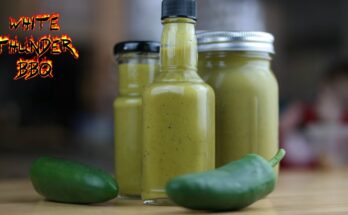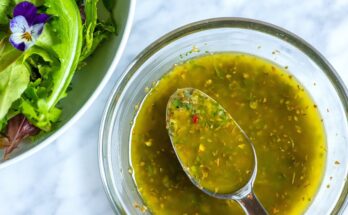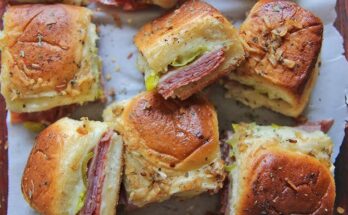Hummingbird Sugar Water Recipe: There’s nothing quite like watching a hummingbird hover in mid-air, wings beating like a blur, as it feeds from your backyard nectar feeder. These tiny, energetic creatures are a joy to observe, and providing them with a safe and nutritious food source is one of the easiest ways to attract them. But don’t fall for the colorful store-bought nectars—they’re often filled with unnecessary dyes and chemicals. The good news? You can make your own hummingbird sugar water at home with just two ingredients.
Feeding hummingbirds isn’t just fun—it also plays a role in supporting local ecosystems, especially during migration seasons when they need quick energy sources. However, making the nectar the wrong way can actually harm them. That’s why it’s crucial to get the sugar-to-water ratio right and follow safe feeding practices.
This guide breaks down everything you need to know about creating the perfect sugar water nectar for hummingbirds, from ingredients to feeder placement. Let’s dive in and become the neighborhood’s favorite hummingbird host!
What is Hummingbird Sugar Water?
Hummingbird sugar water, also known as nectar, is a homemade alternative to the red-dyed nectar found in many pet and garden stores. It mimics the natural sucrose content found in the nectar of flowers, which hummingbirds feed on in the wild. It’s a simple mixture of refined white sugar and clean water—nothing fancy, and definitely no additives required.
Why go homemade? For starters, you’ll avoid harmful dyes and preservatives. It’s also cheaper, more environmentally friendly, and gives you full control over the ingredients. Most importantly, homemade nectar closely replicates what hummingbirds are adapted to consume in nature, which helps support their health, energy levels, and survival during long flights.
Store-bought nectar might promise convenience, but many brands add artificial coloring—specifically red dye #40—that’s completely unnecessary and potentially harmful. Hummingbirds don’t need red nectar. They’re drawn to the color red, yes, but you can achieve that by using a red feeder, not dyed sugar water.
List of Ingredients You’ll Need
Making hummingbird nectar at home requires only two simple ingredients. Chances are, you already have them in your kitchen:
- White granulated sugar (pure cane sugar preferred)
- Clean water (filtered or tap water)
That’s it. Seriously. There’s no need for anything else. In fact, here’s what you should avoid adding:
- ❌ No honey – It ferments quickly and can grow harmful bacteria.
- ❌ No artificial sweeteners – These have zero calories and provide no energy.
- ❌ No brown sugar, raw sugar, or molasses – These contain additives and minerals that are hard for hummingbirds to digest.
- ❌ No red food dye – Unnecessary and potentially toxic over time.
Stick to plain white sugar and water, and your hummingbird visitors will be healthy and happy.
Tools & Equipment Required
Before you begin, gather these simple tools to make the process quick and mess-free:
- Measuring cups (for both sugar and water)
- Small saucepan (for boiling the water)
- Stirring spoon (preferably stainless steel or clean plastic)
- Container or jug (for storing nectar, if making in bulk)
- Clean hummingbird feeder
Optional but helpful:
- Funnel (to pour nectar into feeder without spills)
- Microwave-safe bowl (if you prefer microwaving the water)
With these basic tools and ingredients, you’re ready to whip up a batch of hummingbird-approved nectar in under 10 minutes.
The Ideal Hummingbird Nectar Ratio
The gold standard ratio for hummingbird sugar water is:
1 part white sugar to 4 parts water
This means:
- 1 cup of sugar + 4 cups of water
- ½ cup of sugar + 2 cups of water
- ¼ cup of sugar + 1 cup of water
This 4:1 ratio closely matches the natural sucrose levels found in flower nectar. It provides the right balance of energy and hydration without being overly sweet, which could harm the birds’ kidneys or encourage mold growth.
Avoid the temptation to make it sweeter. More sugar doesn’t mean better—it can dehydrate the birds and make your feeder prone to fermentation, especially in hot weather.
Step-by-Step Guide to Making Hummingbird Sugar Water
Let’s break it down into actionable steps you can follow easily:
Step 1: Measure the Sugar
Start with high-quality white granulated sugar. Using a measuring cup, scoop out the amount you need based on how much nectar you want to make. Example: For a standard feeder, ¼ cup of sugar and 1 cup of water is usually enough.
Step 2: Boil the Water
Boil the water in a small saucepan or microwave-safe container. Boiling helps:
- Dissolve the sugar more effectively
- Kill any bacteria or fungi
- Extend the shelf life of the nectar
Let it come to a full boil for 1–2 minutes.
Step 3: Mix Sugar and Water
Once the water’s boiled, remove it from heat. Stir in the sugar until it fully dissolves. You’ll know it’s done when the liquid is clear and there are no visible sugar crystals.
Step 4: Let the Nectar Cool
Let the mixture cool to room temperature before pouring it into the feeder. Hot or even warm nectar can crack plastic feeders or harm the birds.
Step 5: Fill the Feeder
Use a funnel if needed and fill your clean feeder with the cooled nectar. Pour any leftovers into a sealed container and store in the refrigerator for up to one week.
Tips for Making Perfect Nectar Every Time
Even though the recipe is super simple, there are a few important tips to ensure your hummingbird nectar is always fresh, safe, and irresistible to your tiny feathered friends.
- Use only white granulated sugar. Other types of sugar (like brown, raw, or powdered) contain molasses or cornstarch, which can be harmful to hummingbirds.
- Don’t add red food coloring. It’s completely unnecessary. The birds are attracted to the color of the feeder itself, not the nectar.
- Boil the water when possible. Especially if you’re using tap water, boiling helps eliminate bacteria and extends the nectar’s freshness.
- Let it cool before filling the feeder. Hot nectar can damage feeders and harm hummingbirds. Be patient and let it cool to room temperature.
- Use filtered water if your tap water is heavily chlorinated. Though hummingbirds can tolerate small amounts of chlorine, cleaner water is always better for their health.
- Make small batches during hot weather. In summer, nectar spoils quickly. It’s better to refill more often than to make large quantities that might go bad.
These tiny birds rely on you to give them the best, so attention to detail in your nectar preparation goes a long way toward keeping them coming back.
How Often Should You Change the Nectar?
Here’s where many people go wrong: leaving nectar out for too long. Hummingbird nectar can spoil quickly, especially in warmer weather. And once it ferments or gets moldy, it becomes dangerous for the birds.
As a general rule of thumb:
- In hot weather (85°F/29°C or higher): Change nectar every 1 to 2 days.
- In moderate temperatures (70–85°F): Change every 3 days.
- In cooler temperatures (below 70°F): You can stretch it to 4–5 days, but always check for cloudiness or mold.
Signs that nectar needs replacing:
- Cloudy or murky appearance
- Black spots inside the feeder
- Sour smell or bubbles (signs of fermentation)
- Less activity around the feeder (hummingbirds will avoid spoiled nectar)
Remember, fresh nectar = happy and healthy hummingbirds.
How to Clean Your Hummingbird Feeder
Cleanliness is critical. Even if you change the nectar regularly, a dirty feeder can still breed bacteria and mold, both of which are dangerous to hummingbirds. Here’s how to do it right:
What You’ll Need:
- Mild dish soap (unscented)
- Bottle brush or feeder brush
- Hot water
- Optional: 1-part white vinegar to 4 parts water (for deeper cleaning)
Steps:
- Disassemble the feeder completely.
- Use hot water and soap to scrub all parts—especially tiny feeding ports where mold hides.
- Rinse thoroughly to remove all soap residue.
- For a deeper clean, soak parts in vinegar solution for 10–15 minutes, then rinse again.
- Let it air dry fully before refilling.
Tip: Clean your feeder every time you change the nectar. Even if it looks clean, bacteria can be invisible.
Where to Hang Your Feeder
Location matters. You want a spot that’s easily accessible for the birds—but also safe and shaded to prevent the nectar from spoiling too quickly.
Ideal Feeder Locations:
- Under tree branches or on a shaded porch
- Near flowering plants that naturally attract hummingbirds
- Close to a window so you can enjoy watching them (but use window decals to prevent collisions)
- Away from windy or noisy areas that might scare the birds off
Avoid:
- Full sun exposure (especially during summer)
- High traffic areas (like near doors or pets)
- Near ant trails or bee-attracting plants
You can also use ant moats or bee guards to keep pests at bay. No one wants uninvited guests hogging the nectar.
How to Attract More Hummingbirds
If you’ve made the perfect nectar and hung the feeder, but you’re still not seeing much action, try these tips to boost your backyard’s hummingbird appeal:
1. Plant Native Flowers
Hummingbirds love tubular flowers like:
- Salvia
- Bee balm
- Trumpet vine
- Columbine
- Fuchsia
The more flowers, the more natural nectar they’ll have—making your feeder an added bonus.
2. Use Multiple Feeders
More feeders mean less competition. If you notice a dominant bird chasing others away, place feeders far apart so multiple birds can feed in peace.
3. Add Bright Colors
Hummingbirds are drawn to red, orange, and pink. Use ribbons, wind spinners, or flower pots in those colors to get their attention.
4. Provide Perches
They love to rest between feedings. Add small branches or even buy a hummingbird swing!
Creating a bird-friendly yard turns your feeder into part of a larger ecosystem they’ll return to year after year.
Common Mistakes to Avoid
Even with the best intentions, some mistakes can be harmful to hummingbirds. Here’s what NOT to do:
- ❌ Using honey instead of sugar – Honey ferments quickly and breeds harmful bacteria.
- ❌ Adding red dye – It’s unnecessary and possibly toxic.
- ❌ Neglecting feeder cleaning – Dirty feeders can sicken or kill hummingbirds.
- ❌ Making nectar too strong – More sugar doesn’t mean better. Stick to the 4:1 ratio.
- ❌ Not changing nectar frequently – Especially in heat, old nectar turns fast.
Sticking to the basic, natural method is always safest and most effective.
Hummingbird Feeding Safety Tips
Keeping hummingbirds safe means more than just filling a feeder. Here’s how to protect these fragile little flyers:
- ✅ Use only white sugar and water.
- ✅ Keep feeders clean and mold-free.
- ✅ Hang feeders in shaded spots.
- ✅ Replace nectar every 2–3 days in warm weather.
- ✅ Check for signs of fermentation or pests.
- ✅ Avoid letting feeders run dry. They come to rely on the nectar, especially during migration.
It doesn’t take much to keep them safe—just consistency and attention.
Seasonal Feeding Guidelines
Wondering when to put up your feeder—or when to take it down? Hummingbird feeding seasons vary depending on your region, but here are some general rules:
Spring (March–May):
- Put out feeders early to support migrating birds.
- Males usually arrive before females.
Summer (June–August):
- Peak feeding time. Keep feeders full and clean.
- Add more feeders to accommodate increased traffic.
Fall (September–October):
- Keep feeders out during migration.
- Don’t take them down too early—hummingbirds won’t delay migration because of feeders, contrary to myth.
Winter (November–February):
- In southern climates, a few hummingbirds stay year-round.
- Consider heated feeders in mild winter zones.
Watch local migration maps to stay updated.
FAQs about Hummingbird Sugar Water Recipe
1. What’s the best sugar to use for hummingbird nectar?
Use only white granulated sugar. Avoid brown, raw, powdered sugar, or honey, as these can be harmful.
2. Can I make nectar in bulk and store it?
Yes! Store extra nectar in a sealed container in the refrigerator for up to 7 days. Always let it reach room temperature before refilling your feeder.
3. Do hummingbirds prefer warm or cold nectar?
Room temperature is best. Avoid placing hot nectar in feeders. Cold nectar straight from the fridge can be offered on hot days but generally, room temp is safest.
4. Why aren’t hummingbirds coming to my feeder?
It could be the location, spoiled nectar, or the time of year. Try relocating the feeder, refreshing the nectar, and adding flowers to attract more birds.
5. Can I add vitamins or supplements to the nectar?
No. Hummingbirds get everything they need from natural nectar and insects. Additives may disrupt their digestion or harm them.
Conclusion
Feeding hummingbirds is one of the simplest and most rewarding ways to connect with nature. And it all starts with a two-ingredient nectar that takes less than 10 minutes to make. By following the right sugar-to-water ratio, keeping your feeders clean, and paying attention to seasonal needs, you’re doing your part to support these amazing creatures.
They may be tiny, but hummingbirds bring immense joy to any backyard. Once you master the basics of homemade nectar, you’ll see how easy it is to keep them healthy, happy, and coming back for more.



